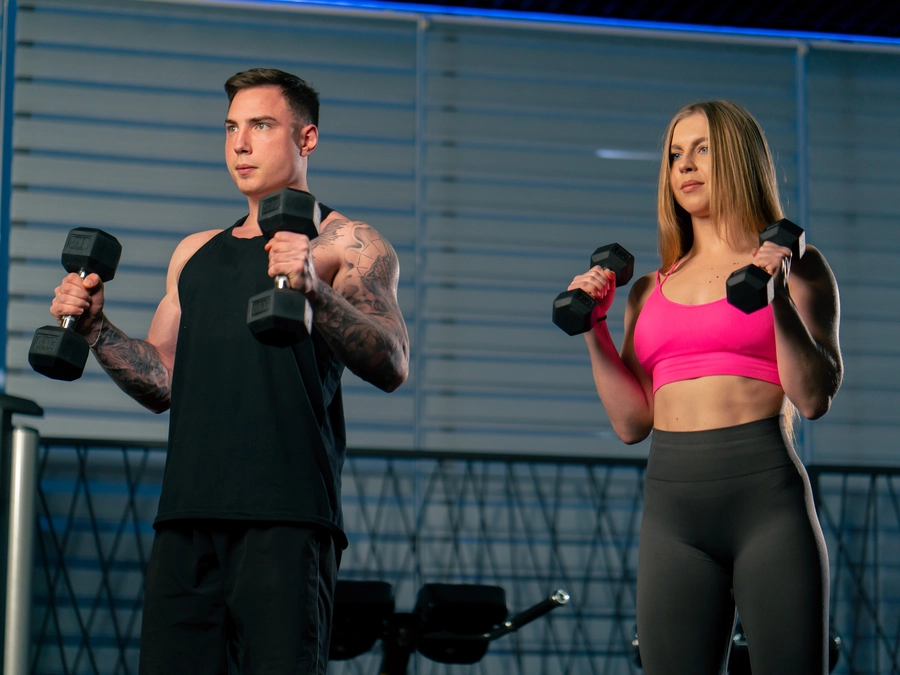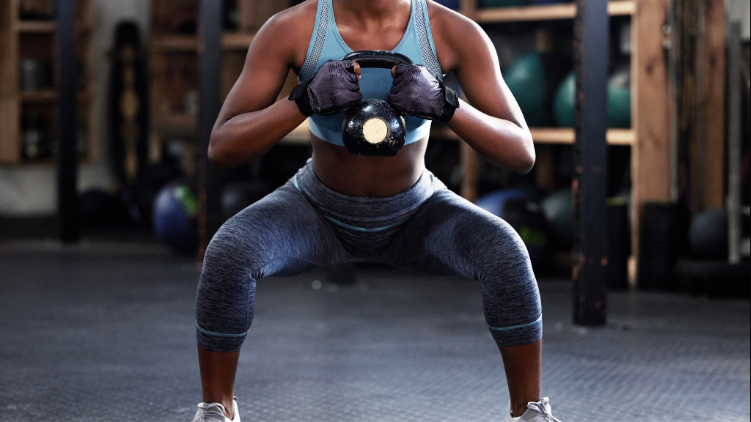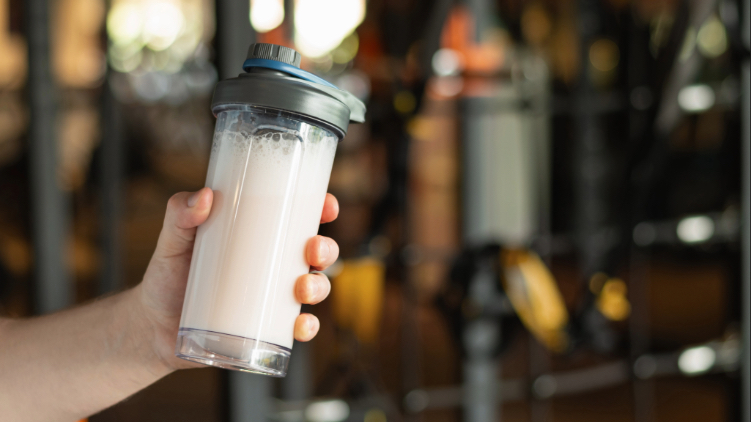Welcome



Ready to elevate your fitness and unleash your full potential? Whether you're a seasoned athlete or just starting, dumbbell workouts are an effective way to improve strength, flexibility, and overall well-being. Gone are the days of bulky gym equipment and complicated routines; with just a pair of dumbbells, you can tailor your training to suit your own fitness level. This ultimate guide will take you step-by-step through a variety of effective exercises, ensuring you not only build muscle but also enhance your endurance and stability.
From beginner-friendly moves to advanced challenges, you'll discover how to incorporate dumbbells into your regimen, maximizing results in minimal time. Embrace the versatility of these simple weights and learn the techniques to make every workout engaging and productive. Unlock your strength, enhance your physique, and elevate every rep with the comprehensive insights and expert tips outlined in this guide. Let's get started on the path to a stronger, healthier you!

Dumbbells rank among the most versatile and effective tools you can incorporate into your fitness routine. Unlike machines that often target isolated muscles, dumbbells engage multiple muscle groups, promoting functional strength and coordination. This versatility makes them ideal for both beginners and advanced athletes looking to enhance their overall fitness. The unique design of dumbbells allows for a wide range of motion, which not only targets more muscles but also improves joint flexibility and stability. Whether you aim to build muscle, burn fat, or simply stay active, dumbbells can help you achieve your fitness goals effectively and efficiently.
A key advantage of training with dumbbells is that they help correct muscle imbalances. When you use a barbell, the stronger side of your body can sometimes compensate for the weaker side, leading to muscle imbalances over time. Dumbbells require each side of your body to work independently, ensuring that both sides develop equally. This balanced muscle development helps prevent injuries and enhances overall functional strength, making everyday activities easier and less strenuous.
Additionally, dumbbell workouts are incredibly accessible and convenient. They require minimal space and can be used virtually anywhere, from your living room to a hotel room when traveling. This convenience eliminates the need for a gym membership, making it easier for you to stick to your fitness routine. Moreover, the simplicity of dumbbells means you can perform a variety of exercises with just one set, saving you both money and storage space. By incorporating dumbbells into your fitness routine, you can enjoy a comprehensive workout that is both effective and adaptable to your lifestyle.
When selecting dumbbells, several types are available, each with its own set of advantages. The main categories include fixed-weight, adjustable, and selectorized dumbbells. Fixed-weight options are the classic style, designed with a permanent weight that remains constant. They are durable and easy to use, making them a popular choice for both home gyms and commercial fitness centers. Fixed-weight dumbbells come in various materials, including rubber, vinyl, and metal, allowing you to choose based on your preference and budget.
Beginning your fitness path with dumbbells may feel both thrilling and a bit daunting. Concentrating on foundational movements helps you develop strength and boost your confidence.
One of the core exercises for beginners is the dumbbell squat. It works your quadriceps, hamstrings, and glutes, offering a sturdy base for lower-body strength. How to do it: Stand with your feet set a comfortable distance apart, grasping a dumbbell in each hand at your sides. Squat down by hinging at your hips and bending your knees, keeping your back flat and chest lifted. Drive upward with your legs to return to a standing position, then repeat for your chosen number of repetitions.
Another important exercise is the dumbbell bench press, which uses free weights to target the chest, arms, and shoulders. Recline on a flat surface (such as a bench) with your soles pressed steadily against the floor. Grip a weight in each hand at chest height, then push them upward until your arms are straight. Slowly bring them back down to the starting point. You can also vary the angle—incline or decline—to emphasize different parts of the chest.
The dumbbell row is a crucial exercise for beginners. It focuses on the back muscles, including the latissimus dorsi, rhomboids, and trapezius. To perform a dumbbell row, stand with your feet set roughly hip-width apart and grip a weight in one hand. Bend at the hips and knees to lean forward, keeping your back straight. Use your opposite hand on a bench or sturdy surface for balance. Pull the weight(dumbbell) up toward your hip, keeping your elbow tucked close, then lower it back down to the starting point. These essential exercises will help you develop a strong, balanced physique and prepare you for more advanced workouts.

Once you've mastered the basics, it's time to challenge yourself with intermediate dumbbell workouts. These moves help you expand your strength and challenge your limits. A solid intermediate exercise is the dumbbell lunge, which works your quads, hamstrings, and glutes while also enhancing balance and coordination. Instructions: Begin in an upright position, with your legs near each other, and grasp a dumbbell in both hands at your sides. Move one leg forward and sink your body downward, until both knees form about a 90-degree angle. Press through your front foot to rise back up, then switch sides and repeat the movement.
The shoulder press with dumbbells is an effective mid-level movement that engages the deltoids, triceps, and upper chest. Begin standing with legs shoulder-distance apart. Hold the dumbbells near shoulder height with your palms facing outward. Push the weights overhead until your arms are fully straightened, then lower them back down with control to the starting position. This exercise helps build shoulder strength and can be performed seated or standing, depending on your preference and stability.
For a more dynamic workout, try incorporating the dumbbell clean and press into your routine. This full-body exercise targets the legs, back, shoulders, and arms, making it a powerful addition to your intermediate workouts. For the dumbbell clean and press, begin with your feet set around hip-width apart while holding a weight in each hand.
Lower the weights by bending at your hips and knees, then push powerfully through your legs and hips to bring them up to shoulder level. From there, press the dumbbells overhead. Finally, lower them back down and repeat the process. These intermediate exercises will help you build strength, endurance, and coordination, taking your fitness to the next level.
For those who have been training consistently and are ready to take their workouts to the next level, advanced dumbbell techniques can provide the challenge needed to continue progressing. One such technique is the dumbbell snatch, a powerful full-body exercise that targets the legs, back, shoulders, and core. For the dumbbell snatch, begin with your feet set around hip-width apart and hold a weight in one hand.
Lower it toward the floor by bending your knees and hips, then drive upward in one swift motion, extending through your legs and hips to lift the dumbbell overhead. Lower the dumbbell back to the starting position and repeat on the other side.
Another advanced technique is the dumbbell Turkish get-up, which requires strength, stability, and coordination. This exercise targets the entire body, with a particular focus on the core and shoulder stability. For the Turkish get-up, start by lying on your back with one arm extended upward and holding a dumbbell. Bend the knee on the same side as the weight while keeping your opposite leg stretched out on the floor.
Use your free hand to assist yourself into a seated position, then continue rising to stand while keeping the dumbbell overhead. Reverse the steps to return to the starting position, then switch sides and repeat the process.
For advanced lifters looking to build explosive power, the dumbbell push press is an excellent choice. This exercise targets the shoulders, triceps, and legs, making it a strong option for advanced training. For the dumbbell push press, begin upright with your legs about shoulder-distance apart and the weights resting near your shoulders. Bend your knees a little, use the force from your legs to drive upward, and press the dumbbells overhead. Lower them under control and repeat. These advanced techniques will challenge your strength, coordination, and endurance, helping you continue to make progress in your fitness journey.
To get the most out of your dumbbell training, it's essential to follow a well-rounded program that targets all major muscle groups and combines strength, endurance, and mobility. One effective strategy is to split your routine across several days, emphasizing different areas. For instance, you might devote one session to the upper body, another to the lower body, and a third to the core or a full-body workout. This way, each muscle group receives focused effort and ample time for recovery.
To build a balanced and effective dumbbell workout, include a range of exercises that engage different muscle groups and movement patterns. Incorporate pushing movements such as the dumbbell bench press and shoulder press, along with pulling exercises like the dumbbell row and bicep curl. Add lower-body exercises, including squats and lunges, to develop strength and stability in your legs and glutes.
This variety supports a well-rounded physique and reduces the risk of muscular imbalances. Additionally, incorporate compound movements—such as the dumbbell clean and press or the Turkish get-up—that activate multiple muscle groups simultaneously, increasing both the efficiency and intensity of your workouts.
Be sure to add both a warm-up and a cool-down to your workout routine. Warming up helps prepare your muscles and joints for movement, reducing the risk of injury. Dynamic stretches and light cardio exercises, such as jumping jacks or arm circles, are great options for warming up.
After your workout, cool down with static stretches to improve flexibility and promote muscle recovery. By creating a balanced dumbbell workout plan, you can ensure that you target all major muscle groups, improve overall fitness, and reduce the risk of injury.
Dumbbell training offers numerous advantages, but it's easy to fall into mistakes that can slow your progress or increase the risk of injury. One frequent error is poor form. Maintaining correct technique is essential for hitting the right muscles and protecting your joints. Take time to master each movement using lighter weights before increasing the load.
Another pitfall is failing to progress. As your strength improves, continue to challenge your body by increasing weight, doing more repetitions, or adding complexity to your movements. Sticking with the same routine too long can lead to plateaus and slow progress. Regularly evaluate your workouts and adjust accordingly.
Overtraining is another concern. Pushing too hard without sufficient recovery can result in burnout or injury. Build rest days into your plan and vary your training intensity to avoid overuse. Pay attention to your body — if you feel persistent soreness or fatigue, take extra rest. By avoiding these errors, you can maximize the benefits of your dumbbell workouts while staying safe and sustainable.

Strength training doesn't stop when you put the dumbbells down. The right nutrition plays just as significant a role in building muscle, improving recovery, and maintaining steady energy levels. That's where Revolution Nutrition comes into the picture. Known for its wide range of supplements, the brand focuses on helping athletes and everyday fitness enthusiasts obtain the necessary nutrients without overcomplicating things.
One of our most popular categories is protein powders. For anyone following a dumbbell routine, protein is essential for repairing muscle fibers that break down during resistance training. A simple whey shake after a workout can speed up recovery and make it easier to hit your next session feeling strong. Revolution Nutrition also offers plant-based options, which makes it easier for people with dietary restrictions to meet their protein goals without sacrificing performance.
Beyond protein, they carry pre-workout blends designed to increase focus and stamina. This can be especially useful for those longer training sessions where you’re pushing through multiple sets of squats, presses, or rows. With added ingredients to support energy and endurance, these blends help you stay sharp and consistent from the first rep to the last.
Another useful area is recovery supplements. BCAAs, electrolytes, and post-workout formulas can help reduce soreness and replace what your body loses during intense training. Pairing dumbbell exercises with the right recovery tools means you’re not just working hard but also working smart.
While no supplement can replace a balanced meal, brands like Revolution Nutrition make it easier to fill in the nutritional gaps. Combined with a solid dumbbell program, their products can support your goals—whether that's building strength, leaning out, or simply staying consistent with your workouts.
Embarking on a strength journey with dumbbell workouts is an empowering and transformative experience. With their versatility, accessibility, and effectiveness, dumbbells offer an incredible pathway to achieving your fitness goals, whether you're a beginner or an experienced lifter. By understanding the benefits of dumbbell training, choosing the right equipment, and incorporating a balanced workout plan, you can unlock your true potential and build a stronger, healthier physique.
Remember to start with essential exercises that build a solid foundation and gradually progress to more advanced techniques as your strength and confidence grow. Avoid common mistakes by prioritizing proper form, challenging yourself with progressive workouts, and allowing adequate recovery time. By following the tips and insights provided in this guide, you can make the most of your dumbbell training and enjoy the numerous benefits it offers.
Embrace your strength journey with determination and consistency, and celebrate the progress you make along the way. Every rep, set, and workout brings you closer to unlocking your true potential and achieving your fitness goals. With dedication and the right approach, you can elevate your fitness routine and enjoy a healthier, more vibrant life. So, grab your dumbbells, follow this ultimate guide, and get started on the path to a stronger, healthier you!